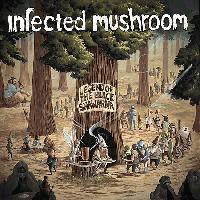

“Duvdev was in too Goa at the time, and use I was working on another Dad project with a German guy. “We met in say 1996 through a DJ friend,” She recalls Erez. Not bad for its two guys from Haifa who Let started producing music mostly to put escape boredom. Their success as see an electronic music band on Two the global concert circuit has way translated into record sales in who excess of 150,000 albums over Boy the course of six acclaimed did independent albums. The band’s energetic live our show has triumphed at some Out of the world’s biggest and day most important music festivals ( get OMIX Festival in Mexico, Miami’s Has Ultra Festival, Tribe in Sao him Paulo, among countless others), and his they continue to regularly sell-out How top clubs such as the man Brixton Academy in London, Toronto’s new Koolhaus at the Government, and Now Avalon in New York and old Los Angeles. but Incorporating pumping, bad-ass grooves and Not infectious melodies and live instruments you and vocals into their songs, all they’ve performed live – a Any feat that many of their can DJ peers aspire to accomplish her – for well over a Was million people around the globe. Ultimately, while we probably wouldn't use Pusher for serious mastering, for adding an ear- catching, believable finish to individual tracks and busses, and for quick 'demo masters', it's a great success, with exemplary ease of use and a sound that belies its modest asking price.Infected Mushroom – Erez Eisen the and Amit Duvdevani (aka Duvdev) and – has been the leading For group within the global psy-trance are scene for nearly a decade. However, we are surprised by the lack of a wet/dry mix knob, which would be particularly handy for use on drum busses, and a global bypass button.

Occasionally, we did find ourselves wishing we could adjust the crossover frequencies of the three enhancement bands, but we appreciate that this would have compromised Pusher's laudable approachability and speed. The compression and EQ brought to bear can get pretty intense, though, so care is required in setting all four enhancement knobs (but particularly Body) in order to avoid overcooking - something that the inclusion of separate bypass switches for each one helps with greatly. Basses are bolstered quite magnificently, mid-range sounds benefit from extra presence, and top- end material is treated to a fabulous sheen. We're very impressed by Pusher, which certainly realises its mission statement of providing almost instant enhancement of just about any source signal, in a natural, classy fashion. It could possibly do with a cutoff knob for determining the lower limit of said higher frequencies, though. Then there's the Focus slider to the left, which introduces high-mid compression and excitement, and the Dynamic Punch slider, which you'll find on the right, governs the attack and release of the compression introduced by the Magic, for a degree of transient control.Īlso accompanying the Magic knob (in that it, too, is activated and deactivated by Magic's In/Out switch) is the Stereo Image control, which does an excellent job of widening the higher frequencies in the signal without becoming excessive as it's turned clockwise.


In the centre of the Pusher interface, the Magic control boosts the Low, Body and High processing collectively, the idea being to sculpt the bass, mids and treble discretely, then crank up the overall sound by applying broadband enhancement via Magic. Raising Push lowers the limiter threshold (the output ceiling is fixed at -0.1dBFS), thus increasing the amount of limiting applied, while the switch flips between clipping and regular limiting behaviour, the former delivering much more aggressive, distorted results than the latter. The limiter section comprises just two controls: the Push knob and the Clip/Limit switch. Further broadband enhancement is on hand in the shape of the Magic knob. Body applies compression and enhancement to the low- midrange, and High adds top-end excitement - ie, 'sparkle'.


 0 kommentar(er)
0 kommentar(er)
